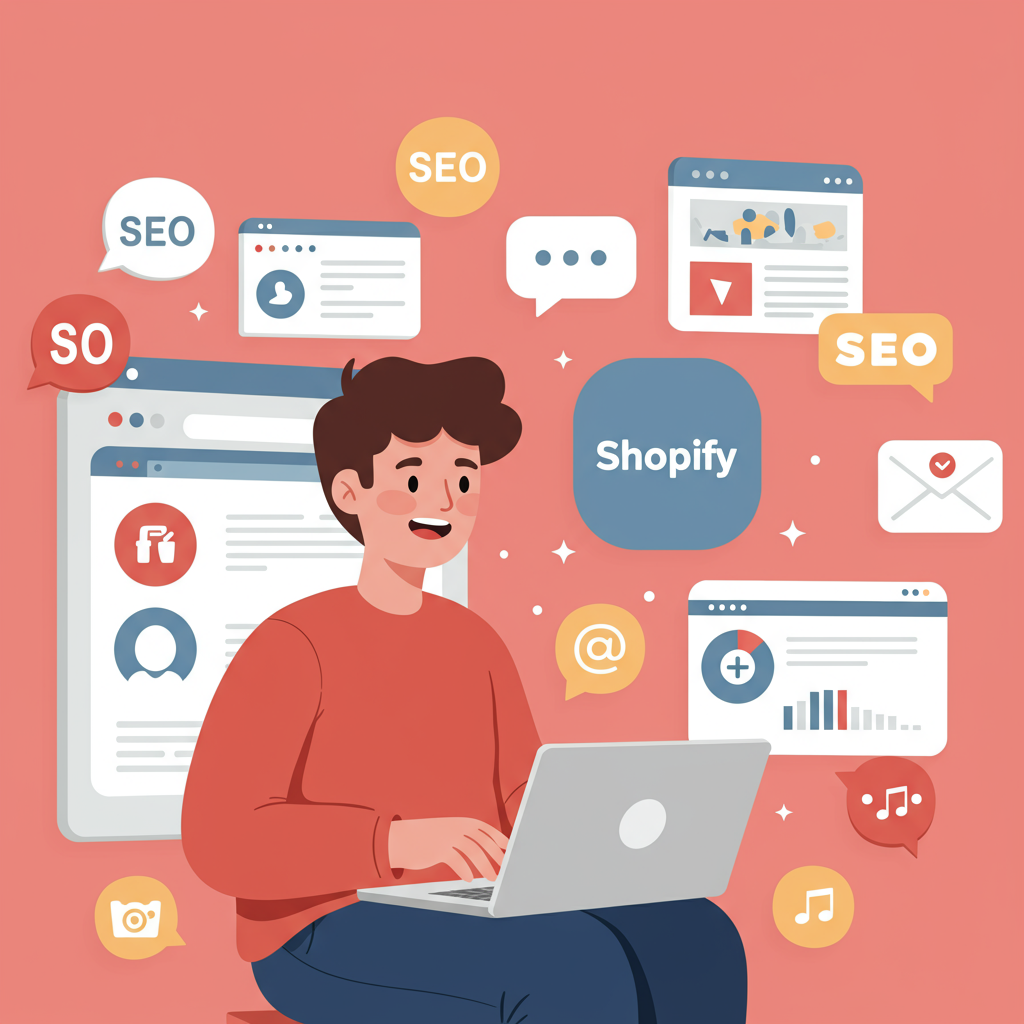Discover how strategic content can transform your Shopify store from a product catalog into a thriving brand and conversion powerhouse.
Hello fellow Shopify merchants! I’m here today to talk about something truly transformative for your online store: content marketing. It’s not just a buzzword; it’s the engine that drives organic traffic, builds brand loyalty, and ultimately, converts browsers into loyal customers.
Many of us focus heavily on product listings and ads, which are vital, of course. But imagine a world where customers seek *you* out because you provide value, answer their questions, and entertain them. That’s the power of content.
So, how do we, as Shopify store owners, harness this power? Let’s dive into some actionable content marketing ideas that I’ve seen work wonders.
First up, and perhaps the most foundational, is **Blogging**. Your store’s blog isn’t just a place for random thoughts; it’s a strategic hub for SEO and customer engagement.
Think about “how-to” guides. If you sell kitchenware, a blog post on “How to Bake the Perfect Sourdough” (featuring your bread proofing basket) is far more engaging than just a product page.
Product comparison posts are also incredibly effective. “Our [Product A] vs. [Competitor’s Product B]: Why Ours Wins” can directly address customer hesitations and highlight your unique selling points.
Don’t forget lifestyle content. Show your products in action, integrated into a desirable lifestyle. If you sell outdoor gear, share stories of adventures where your gear was essential.
Next, let’s talk about **Product Descriptions**. These are often overlooked as mere technical specifications, but they are prime content real estate.
Go beyond features; tell a story. What problem does your product solve? How will it make your customer’s life better, easier, or more enjoyable? Use evocative language.
Integrate relevant keywords naturally within your descriptions to boost your product pages in search engine results. Think about what your customers are searching for.
**Visual Content** is non-negotiable in e-commerce. High-quality images are a given, but let’s push further.
Videos are incredibly powerful. Product demos, unboxing experiences, customer testimonials, or even short, engaging clips for social media can significantly increase conversion rates.
Consider infographics if you have complex information to convey, like the benefits of a specific ingredient or the steps to assemble a product. They’re shareable and easy to digest.
Now, let’s move to **Email Marketing**. This is your direct line to your customers, and it’s a goldmine for content distribution.
Beyond promotional emails, send out valuable newsletters. Share your latest blog posts, behind-the-scenes glimpses, customer spotlights, or exclusive tips related to your niche.
An abandoned cart email sequence isn’t just a reminder; it’s an opportunity to provide value. Maybe offer a helpful tip related to the product they left behind, or answer a common FAQ.
**Social Media** is where your brand’s personality shines. Each platform offers unique content opportunities.
Instagram and Pinterest are perfect for visually appealing content and shoppable posts. TikTok thrives on short, engaging, and often humorous videos. Facebook is great for building community groups and longer-form discussions.
Engage with your audience! Ask questions, run polls, respond to comments. Social media isn’t just for broadcasting; it’s for building relationships.
**User-Generated Content (UGC)** is perhaps the most authentic form of content. Encourage customers to share photos and videos of themselves using your products.
Run contests where customers submit their best photos or stories. Feature their content on your website and social media. This builds trust and provides endless authentic material.
**Search Engine Optimization (SEO)** underpins all your content efforts. Research keywords relevant to your products and niche, and strategically incorporate them into your blog posts, product descriptions, and page titles.
Ensure your Shopify store is technically optimized for speed and mobile-friendliness. Google loves fast, responsive sites, and so do your customers.
Finally, consider **Influencer Marketing**. Collaborating with micro-influencers in your niche can expose your brand to a highly targeted and engaged audience.
Look for authentic partnerships where the influencer genuinely loves your product, rather than just a paid endorsement.
Don’t forget to **repurpose your content**. A single blog post can become multiple social media snippets, an email newsletter section, a short video script, or even a series of Instagram stories.
And always, always, **measure your results**. Use Shopify analytics, Google Analytics, and social media insights to see what content resonates, drives traffic, and leads to conversions.
This isn’t a one-time effort; content marketing is an ongoing journey of learning and adapting. It’s about consistently providing value to your audience.
What do you think about this article? Are there any content strategies you’ve found particularly effective for your Shopify store? I’d love to hear your insights.
By investing time and creativity into these content marketing strategies, you’re not just selling products; you’re building a brand, a community, and a sustainable future for your Shopify business.






